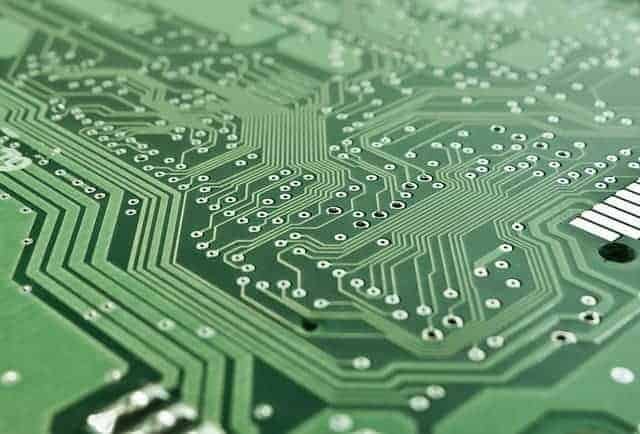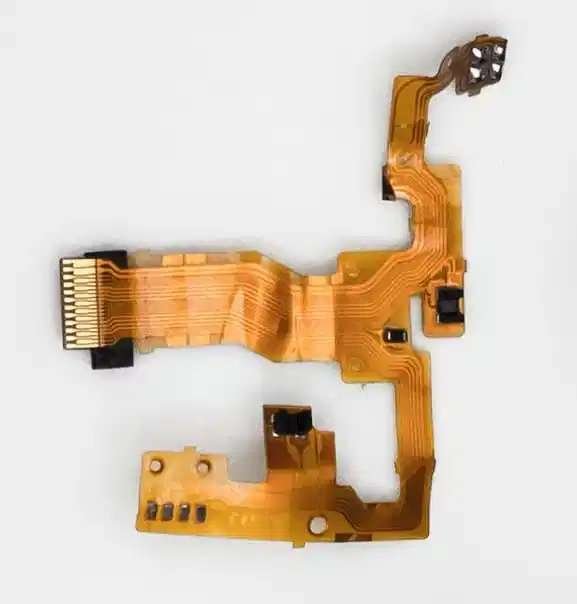Printed circuit boards have become helpful in many ways. You will find them in almost every electronic gadget. Moreover, the demand for PCBs has increased. Many pieces of equipment and device manufacturers need printed circuit boards for the manufacturing process.

However, many people are confused about the materials used in PCB manufacturing. This is because the performance and durability of a PCB board depend on the material used.
So, to ensure you select the suitable materials for the board, you need to review the available materials. Below is a complete guide on the PCB materials you can consider in 2022.
Types of PCB
There are many types of printed circuit boards. Each has its own material type, manufacturing process, and usage. Out of all types of PCB, you need to select the appropriate one according to your needs.
Single Layer PCB
Single-layer PCBs or single-sided PCBs are simple boards but the most used ones. They are easy to design and can be made from different materials.
The PCB is manufactured out of a single layer of the base material. One side of the board has a thin layer of conducting material. In most cases, the conducting material is copper due to its good conducting characteristics.
With single layer PCB, only one side connects various types of electronic components.
Double-layer PCB
A double layer or double-sided PCB is a circuit board with a conducting material applied to both sides.
Double-sided printed circuit boards are well made to allow more functions than single-sided circuit boards.
Multilayer PCB
This is a printed circuit board that has more than two layers. Hence, a multilayer PCB has three or more conductive layers of copper.
Multilayer PCBs are made from different materials and come in a wide range of sizes. However, due to their complexity in design, they are used in large electrical tasks.
Flex PCB
Flex PCBs are also known as flexible PCBs. This type of PCB is made from flexible materials such as polyimide, PEEK, or transparent conductive polyester film.

Many people prefer flex printed circuit boards because they come with numerous benefits. One main advantage is that they can be wrapped around corners. This leads to weight and cost savings.
The material used in PCB
1. Substrate
The substrate is the material of the PCB body. Even though different codes are available, the most popular one is FR4.
FR stands for Fire Resistant, and the 4 stands for the four materials used. Most manufacturers prefer FR4 because it has several unique features.
FR4 prepreg and laminates are made using glass cloth and epoxy resin. Moreover, they are affordable and help enhance the board’s overall performance.
2. Copper foil
This is another vital material used in manufacturing printed circuit boards. Copper foil is a conductor of electric supply on the substrate. Thus PCBs require copper foils for practical functionality.
3. Solder Mask
Another primary PCB material is solder masks. A solder mask is used to protect the copper on the board. Also, the material is significant for various reasons.
Some problems can make the circuit board less effective. Electrical shocks, oxidation, and dust can occur on the circuit board. To prevent these problems, a solder mask is used.
Solder masks are available in different colors, including white, black, red, and many more.
4. Prepreg
Prepreg or PP is another essential material needed for PCB manufacturing. It is a necessary raw material in printed circuit board making. Its primary role is adhesive between the layers. The specifications of prepreg are the thickness and glue amount.
5. Dry Film
A photosensitive dry firm, commonly known as the dry film, is a resin substance sensitive to a specific spectrum. The real has three layers and the photosensitive layer is squeezed between the lower and upper layers.
In addition, there are two types of dry film. There is the photo-polymerization type and photo-decomposition type.
6. Negative film
The printed circuit board’s design is possible because of the negative design. Once you submit the circuit diagram to a PCB factory, the diagram goes through the printer known as a light plotter.
Negative film is an important material in the circuit industry because things that use the image transfer principle must become a negative film.
The main process in PCB fabrication
Manufacturing PCB is a complex process where several steps are involved. Below are the most crucial steps in PCB fabrication.

1. PCB design and layout
The first step is the design. The designer’s layout is a blueprint for the printed circuit board to fulfill the requirements outlined. However, before the PCB fabrication, the designers must inform the manufacturer about the software version used.
2. Production prepare
*Cutting lamination – this is where cutting and lamination are done according to the size of the panel.
*Drying – the process is to get rid of moisture in the board and prevent it from warping.
3. Inner layer etching
In this step, there is the etching and unloading of the film. The copper skin covered by the dry film is secured through etching.
4. Lamination
The copper foil is pushed to the board through an insulating medium between the layers.
5. Outer layer imagining
Here, the dry film is applied to the copper, and photo image reactions are done on the dry film.
6. Outer layer etching
The exposed copper is etched away by etching the line, but the copper-covered container remains.
7. Silkscreen
This is an essential step in the PCB fabrication process. It is where essential information is printed onto the board.
8. Profile
Here, a shape program is created based on the border. However, the shaping process is based on the cnc milling offered by the engineering department.
9. Electrical testing
Electrical testing on the board is done once the production is complete. The tests that are done include circuit continuity and isolation tests.
10. Packing and delivery
Once testing and inspection are complete, the printed circuit boards are packed, sealed, and delivered.
Summary
In conclusion, it is important to learn more about PCB materials before selecting one. This is because the materials used in manufacturing printed circuit boards are difficult to understand.
However, the above guide provides all the information you need about PCB materials. Also, you can consult the manufacturer before choosing one.

